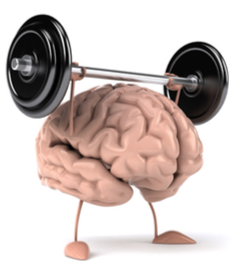 Rather than step backwards into the abyss of a “do your own thing” system in which questions of equality are left to the moment, let’s see if we can use Standards as a way to move in a new direction. At the core of the Standards is a demand for deeper thinking as it is evidenced through performance. Jay McTighe and Grant Wiggins suggest that if we rethink our curriculum maps, we may find that there is a dearth of opportunities for students to engage in thinking and demonstrate their understanding through carefully designed performances.
Rather than step backwards into the abyss of a “do your own thing” system in which questions of equality are left to the moment, let’s see if we can use Standards as a way to move in a new direction. At the core of the Standards is a demand for deeper thinking as it is evidenced through performance. Jay McTighe and Grant Wiggins suggest that if we rethink our curriculum maps, we may find that there is a dearth of opportunities for students to engage in thinking and demonstrate their understanding through carefully designed performances.
We might say that, with all the desire for students to build their capacity for “grit”, they need to be motivated to stay with a task. Daniel Pink refers to this in his book, Drive, in which he makes the case for intrinsic motivation as critical for success. He identifies 3 key drivers: purpose, autonomy, and mastery.
Here are 4 steps that schools can take that will move toward a real engagement with the Standards rather than a system that retrofits what they are already doing.
1. Make certain that curriculum, when designed to meet the standards, accounts for:
- What is the purpose of this work? Why do students need to engage with it? What is essential? Now that they know it, how can they use it to make a better world?
- What do we expect students to master as a result of this work? How do we emphasise both process and product as significant ways of knowing? How do we distinguish formative assessments in which students are given feedback on the scaffolds that they need to do good work from summative assessments where they are measured for reporting purposes?
- What sorts of choices do we offer for students so that they can demonstrate what they know, what they intend to learn, and the processes by which their learning occurs?
2. Make certain that teachers are teaching thinking.
- How do they incorporate teaching skillful thinking directly?
- How do they incorporate teaching thinking dispositions for effective lifelong learning?
- How do they foster strategic and creative thinkers?
3. Choose thinking dispositions such as the Habits of Mind so that there is an explicit understanding about how much these dispositions are valued in the school culture.
- Do a study on our book Dispositions: Reframing Teaching and Learning.
- Make certain that focusing on the dispositions is not just another labeling system. Rather, it is an explicit way to reinforce the habits that students will need as they engage with the more rigorous, performance-based curriculum that is designed.
Take the work on it as a school— avoid depending on volunteers or one teacher at a time.
- Build a school culture in which thinking is central to all that happens.
- Make certain that there are signs and signals around the school—treat thinking as an athletic event that is building the muscles of the brain.
Stay the course—use the Habits as a way to deal with the many challenges that continue to confront schools.
